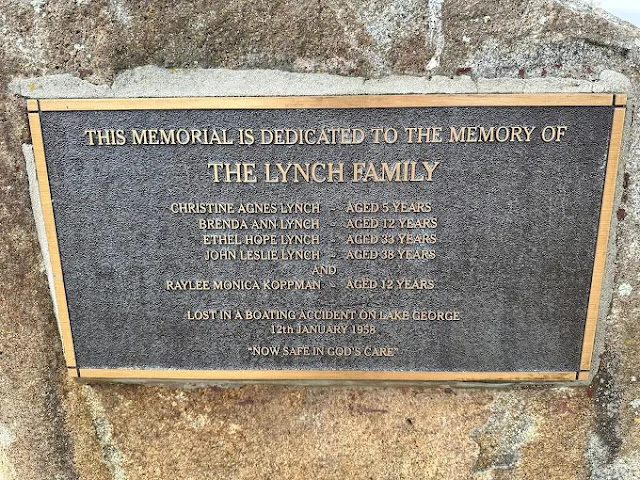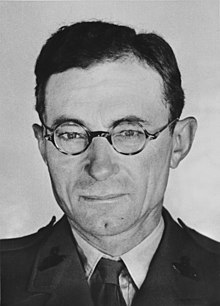-----------ooOoo-----------
The stories behind the names on the signs at the rest stops on the Remembrance Driveway, which goes from Sydney to Canberra.
The highway commemorates persons awarded the Victoria Cross by naming rest stops after them.
__________
The Victoria Cross (VC) is the highest and most prestigious award for gallantry in the face of the enemy that can be awarded to British and Commonwealth forces
The VC was introduced on 29 January 1856 by Queen Victoria to honour acts of valour during the Crimean War.
In 1991 the Victoria Cross for Australia was created, so that the VC no longer needed to be awarded by the British monarch. The Victoria Cross for Australia is the "decoration for according recognition to persons who in the presence of the enemy, perform acts of the most conspicuous gallantry, or daring or pre-eminent acts of valour or self-sacrifice or display extreme devotion to duty". Awards are granted by the Governor-General with the approval of the Sovereign.
-----------ooOoo-----------
Charles Anderson VC (1897-1988)
__________
Location of rest stop:
Federal Highway, Lake George, ACT
By the way # 1:
There is a further memorial at Anderson VC rest stop:
Mrs Hope Lynch, Mr John Lynch, their daughters Brenda aged 12 and Christine aged 5, Mr Lynch’s niece Rae Lee, aged 12, and Father Lloyd Reynolds of Catholic Presbytery, Queanbeyan attempted to cross Lake George in a 3.35m/11 foot plywood skiff, with a quarter tank of petrol in windy, rough conditions. The Coroner described the attempt as foolhardy. Father Lloyd Reynolds of the Catholic Presbytery, Queanbeyan was the only survivor.
The Coroner pointed out that this was the second case within two years where five people had lost their lives in one boating tragedy, stating it should serve as a warning to isolated small boats using the lake. 5 Royal Military College cadets lost their lives in 1956 when two sailing boats capsized. The Lynch family and guests had travelled to the other side of the lake for a picnic. When the weather turned, they decided to return to the original side. Inspecting the tank, they found only a quarter tank of petrol. They decided to row until there was a need to turn on the motor. The conditions became so rough after a short time that they elected to return to side they had just left. The motor refused to start and the boat filled with water. Mrs Lynch and Christine could not swim. Father Reynolds was left with the three children clinging to the overturned skiff, he eventually deciding to try to swim to shore to summon help. He made it, ran 2.4 kilometres / 1.5 miles to a house and obtained assistance.
By the way #2:
Lake George doesn’t always have water, it fills and empties periodically. This is another view of Lake George from the Anderson VC rest stop when Lake George was empty:
Studies have proven that the shallow lake – 6m at its deepest and with an average depth of 2.5m when full – fills and empties as a result of rainfall and evaporation.
Governor Macquarie named the “noble expanse of water” after the reigning monarch King George IV. There is now a move to refer to the lake by its Indigenous name of Weereewaa, which, according to Ngambri elder Shane Mortimer, means “place of many migratory birds”.
By the way #3:
Not every VC recipient has a rest stop named after him on the Remembrance Highway. The rest stops honour 24 Australian World War II and Vietnam War Victoria Cross recipients, selected to represent all servicemen and women.
__________
Charles Anderson:
About:
After growing up in Africa and being schooled in England, Anderson served as an officer during the East African campaign against the Germans during the First World War, reaching the rank of captain and being awarded the Military Cross.
After the war, Anderson settled as a farmer in Kenya. In the early 1930s, he married an Australian woman and later moved to Australia, where he became a grazier.
In 1939, he joined the Militia, Australia's part-time military force, before volunteering for overseas service after the outbreak of the Second World War. In early 1941, he was deployed to Malaya as part of the 8th Division, where he rose to command the 2/19th Battalion against the Japanese following their invasion of Malaya in December of that year.
He was awarded the Victoria Cross for his service there in 1942.
Anderson was captured after the fall of Singapore in 1942 after taking part in its defence and spent over three years in Japanese captivity, before being released at the end of the war.
In the post-war years, Anderson returned to farming and served as a federal parliamentarian, representing the Division of Hume twice between 1949 and 1961, before retiring. He died in Canberra at the age of 91.
__________
Citation for VC:
Charles Anderson VC
NX 12595 Lieutenant Colonel Charles Groves Wright ANDERSON MC
2/19th Australian Infantry Battalion, A.I.F.
18th to 22nd January 1942 in Malaya
"During operations in Malaya from 18th to 22nd January, 1942, Lieutenant-Colonel Anderson, in command of a small force, was sent to restore a vital position and to assist a Brigade. His force destroyed ten enemy tanks. When later cut off, he defeated persistent attacks on his position from air and ground forces and forced his way through the enemy line to a depth of fifteen miles. He was again surrounded and subjected to very heavy, frequent attacks, resulting in severe casualties to his force. He personally led an attack with great gallantry on the enemy, who were holding a bridge, and succeeded in destroying four guns. Lieutenant-Colonel Anderson, throughout all this fighting, protected his wounded and refused to leave them. He obtained news by wireless of the enemy position and attempted to fight his way back through eight miles of enemy occupied country. This proved to be impossible, and the enemy were holding too strong a position for any attempt to be made to relieve him. On 19th January, Lieutenant-Colonel Anderson was ordered to destroy his equipment and make his way as best he could around the enemy position.
Throughout the fighting, which lasted for four days, he set a magnificent example of brave leadership, determination and outstanding courage. He not only showed fighting qualities of very high order but throughout exposed himself to danger without any regard for his own personal safety".
[London Gazette: 13th February 1942]
By the way #4:
During the action for which he was awarded the Victoria Cross, Anderson had tried to evacuate the wounded by using an ambulance, but the Japanese would not let the vehicles pass the bridge.
Although the detachment attempted to fight its way through another eight miles (13 km) of enemy-occupied territory to Yong Peng, this proved impossible, and Anderson had to destroy his equipment and attempted to work his way around the enemy. Anderson then ordered every able man to escape through the jungle to link up with the retreating main force in Yong Peng heading for Singapore. They had no choice but to leave the wounded to be cared for by the enemy, assuming the Japanese would take care of the wounded. However the Japanese unit at Parit Sulong later executed the approximately 150 wounded Australian and Indian soldiers next to the bridge of Parit Sulong, in the Parit Sulong Massacre.
General Takuma Nishimura of the Imperial Japanese Army, who was tried and hanged by Australia in relation to the massacre in 1951.
By the way #5:
In the above battle:
At one point in the conflict, Anderson led an attack himself and led his forces in a mad, headlong scramble straight at the enemy. He was singing “Waltzing Matilda” while he personally took out two machine gun posts with his pistol and a few grenades. And on more than a few occasions the Australian was responsible for gruesome hand-to-hand fighting and bayonet charges to clear the way for his men to advance.
_________
Gallery:















No comments:
Post a Comment
Note: Only a member of this blog may post a comment.